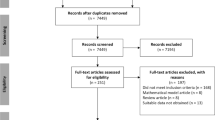Abstract
Masquerading prey resemble inedible objects such as leaves, twigs, stones and bird-droppings; and benefit because their predators misclassify them as the objects that they appear to resemble. From previous work on the importance of context cues in animal learning, we predict that predators will be less likely to misclassify masquerading prey as their models when they are found in a context in which predators have never before experienced the model. Here, we test this prediction using domestic chicks Gallus gallus domesticus as predators and twig-mimicking larvae of the Early Thorn moth Selenia dentaria as masquerading prey. We found that the benefit of masquerade was significantly larger when the twig-mimicking caterpillar was found in the context in which birds had previously experienced twigs. This suggests that masqueraders may have to pay opportunity costs associated with matching their models in position and microhabitat; and that predators’ classification decisions are complex and multi-factorial.




Similar content being viewed by others
References
Allen JA, Cooper JM (1985) Crypsis and masquerade. J Bio Edu 19:268–270
Caro T (2005) Antipredator defences in birds and mammals. Chicago University Press, Chicago, pp 34–55
Carrick R (1936) Experiments to test the efficiency of protective adaptations in insects. Trans R Entomol Soc Lond 85:131–139
Cloudsley-Thompson JL (1981) Comments on the nature of deception. Biol J Linn Soc 16:11–14
Cott HB (1940) Adaptive colouration in animals. Methuen, London, pp 311–343
Cuthill IC, Stevens M, Windsor AMM, Walker HJ (2005) Disruptive coloration and background matching. Nature 434:72–74
De Ruiter L (1952) Some experiments on the camouflage of stick caterpillars. Behaviour 4:222–232
Dockery M, Meneely J, Costen P (2009) Avoiding detection by predators: the tactics used by Biston betularia larvae. British J Entomol Nat Hist 22:247–253
Edmunds M (1974) Defence in animals: a survey of anti-predator defences. Longman, Harlow
Edmunds M (1981) On defining ‘mimicry’. Biol J Linn Soc 16:9–10
Endler JA (1981) An overview of the relationships between mimicry and crypsis. Bio J Linn Soc 16:25–31
Gluck MA, Mercado E, Myers CA (2008) Learning and memory: from brain to behaviour. Worth Publishers, New York
Hailman JP (1977) Optical signals: animal communication and light. Indiana University Press, Bloomington, pp 174–176
Krause J, Ruxton GD (2002) Living in groups. Oxford University Press, Oxford
Merilaita S, Lind J (2006) Great tits searching for artificial prey: implications for cryptic coloration and symmetry. Behav Ecol 17:84–87
Robinson MH (1981) A stick is a stick and not worth eating: on the definition of mimicry. Bio J Linn Soc 16:15–20
Rothschild M (1981) The mimicrats must move with the times. Bio J Linn Soc 16:21–23
Rowland HM, Cuthill IC, Harvey IF, Speed MP, Ruxton GD (2008) Can’t tell the caterpillars from the trees: countershading enhances survival in a woodland. Proc R Soc Lond B 275:2539–2545
Ruxton GD, Speed MP, Kelly DJ (2004a) What, if anything, is the adaptive function of countershading? Anim Behav 68:445–451
Ruxton GD, Sherratt TN, Speed MP (2004b) Avoiding attack: the evolutionary ecology of crypsis, warning signals and mimicry. Oxford University Press, Oxford
Schaefer HM, Stobbe N (2006) Disruptive coloration provides camouflage independent of background matching. Proc R Soc Lond B 273:2427–2432
Shettleworth SJ (2010) Cognition, evolution and behaviour, 2nd edn. Oxford University Press, Oxford
Skelhorn J, Ruxton GD (2010) Predators are less likely to misclassify masquerading prey when their models are present. Biol Lett (in press)
Skelhorn J, Rowland HM, Ruxton GD (2010a) The evolution and ecology of masquerade. Bio J Linn Soc 99:1–8
Skelhorn J, Rowland HM, Speed MP, Ruxton GD (2010b) Masquerade: camouflage without crypsis. Science 327:51
Skow CD, Jakob EM (2006) Jumping spiders attend to context during learned avoidance of aposematic prey. Behav Ecol 17:34–40
Stevens M, Meriliata S (2009) Animal camouflage: current issues and new perspectives. Phil Trans R Soc B 364:423–427
Stevens M, Cuthill IC, Winsor AMM, Waker HJ (2006) Disruptive contrast in animal camouflage. Proc R Soc Lond B 273:2433–2438
Tinbergen L (1960) The natural control of insects in pinewoods. 1. Factors influencing the intensity of predation by a song bird. Archives Neerlandaises de Zoologie 13:265–343
Vane-Wright RI (1980) On the definition of mimicry. Biol J Linn Soc 13:1–6
Vane-Wright RI (1981) Only connect. Bio J Linn Soc 16:33–40
Acknowledgments
We thank NERC for funding; and John Delf, Hannah Rowland and Mike Speed for considerable help and advice throughout the project. We thank three anonymous reviewers for very helpful comments.
Author information
Authors and Affiliations
Corresponding author
Rights and permissions
About this article
Cite this article
Skelhorn, J., Ruxton, G.D. Context-dependent misclassification of masquerading prey. Evol Ecol 25, 751–761 (2011). https://doi.org/10.1007/s10682-010-9435-9
Received:
Accepted:
Published:
Issue Date:
DOI: https://doi.org/10.1007/s10682-010-9435-9




